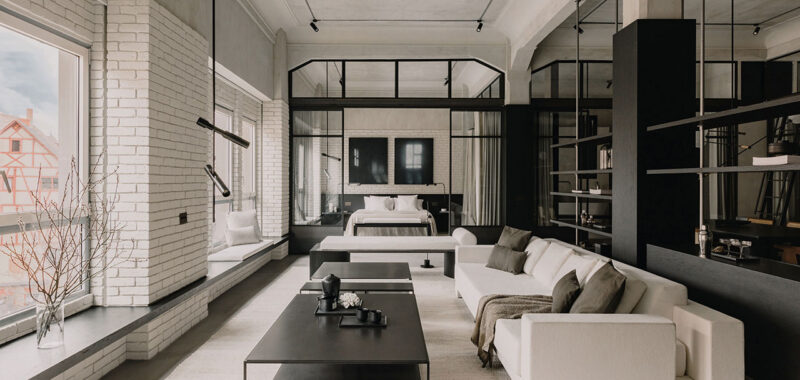Forward-thinking design ideology from Gustave Eiffel’s era echoes in the modern sensibilities behind contemporary interior architecture found in urban French dwellings. But what throughline links structures like the famed tower with local architecture in a place such as Colmar, France? Borrowing a term coined by the late engineering scholar David Billington – structural art. Fine artists hailing from the area like Frédéric Auguste Bartholdi, who collaborated with Gustave Eiffel to create the equally famous Statue of Liberty, left the northeastern Alsace region with an indelible creative charge.
An OZA Design project, the Milo Apartment, shares unique DNA with other works whose structural efficiency and material economy yield an expressive personal style. Paralleling Paris’s Haussmannian apartments (rational plans, geometric elements, streamlined adornments) and tangential to the opulent châteaus around its periphery, this residence blends French and German influences with historical references and the surrounding material vernacular sans period style.
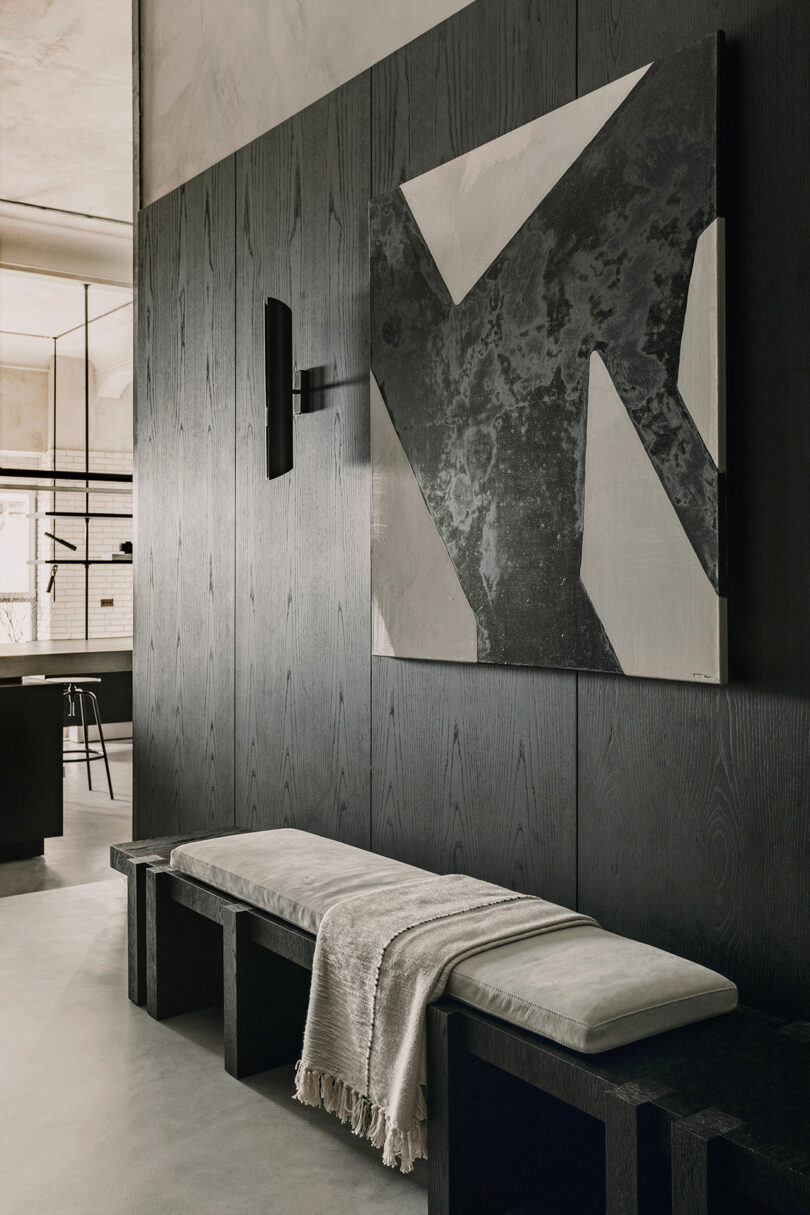
Özge Öztürk and Alexandre Simeray, the principal architects behind OZA, imbue their work with a sense of nostalgia without pandering to the past. “In our quest to honor Colmar’s artistic heritage, we collaborated closely with local artisans, ensuring that every detail of Milo Apartment reflects the city’s creative spirit. From custom metal fixtures to bespoke furnishings, each element was crafted with care, preserving the essence of Colmar’s artisanal tradition.”
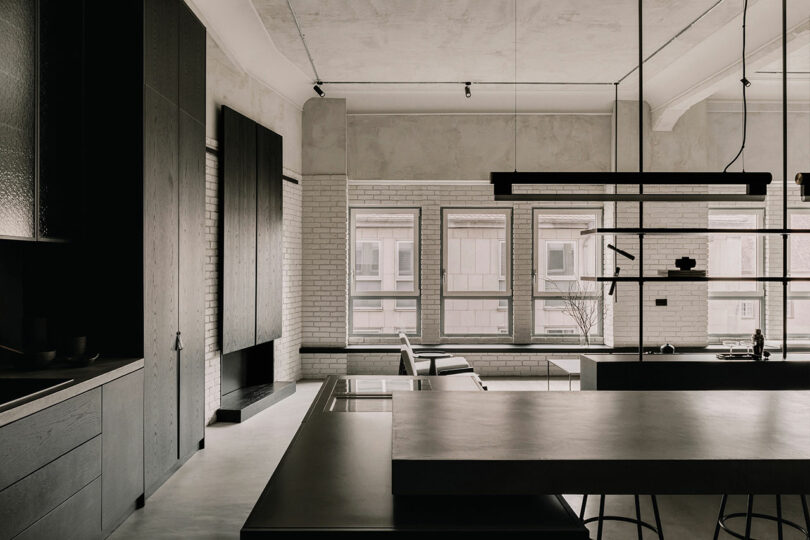

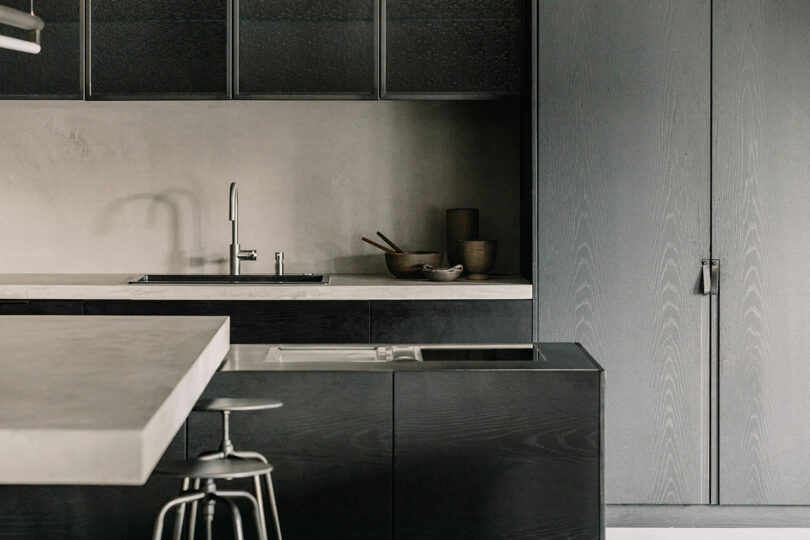
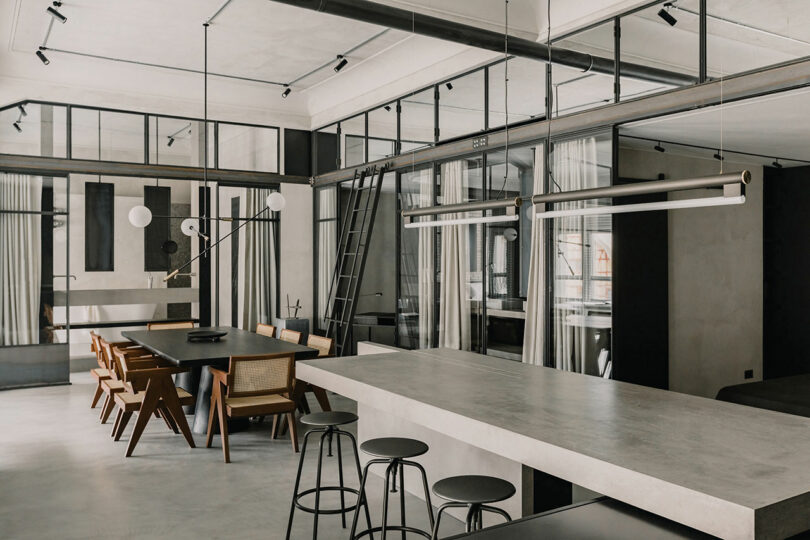
The residence occupies part of a former commercial building constructed in 1912 by local architect Georg Bloch. It is situated on Place des Martyrs de la Résistance and surrounded by colorful timber-framed houses, narrow streets, and lively balconies. It stands as a testament to the staying power of progressive design showcasing modern, brutalist properties that were far ahead of their time. An early example of reinforced concrete architecture, the structure boasted integrated electricity, a secured generator, an elevator with an operator, and iconic retail establishments on the ground floor. Businesses continue to fill that space through today.

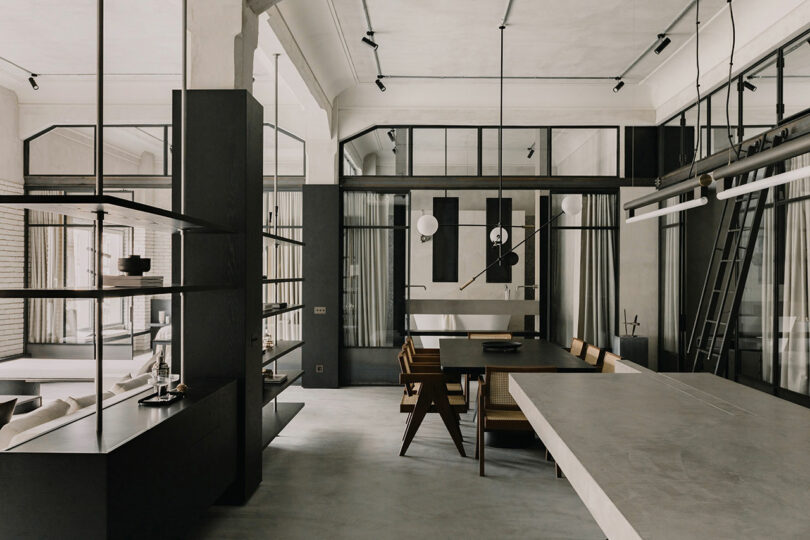
Leaning into the site’s daylit factory concept, the apartment home celebrates the residents’ desire for a more connected family lifestyle within the 2,700-square-foot floor plan, which becomes more expansive in sections that enjoy 12-foot ceilings. The public spaces comprise an entryway, kitchen, living, and dining area – all with dramatic sight lines that bear witness to elegant material play. The private spaces, which can be made more public through architectural devices, include a luxurious variety: the primary bedroom with spa-like ensuite and dressing room; two guest bedrooms that share a large full bathroom; a modest powder room; a generous utility area; and 860 square feet of storage space hidden above some of the secondary spaces.


Aesthetics and layout composition follow Frank Lloyd Wright’s oft-represented adage “form and function are one.” The apartment is a captivating amalgam of sheer glass, matte metal, concrete, white brick, light linen curtains, and dark wood paneling that serve to please the eye, make space, and articulate programming in plan.
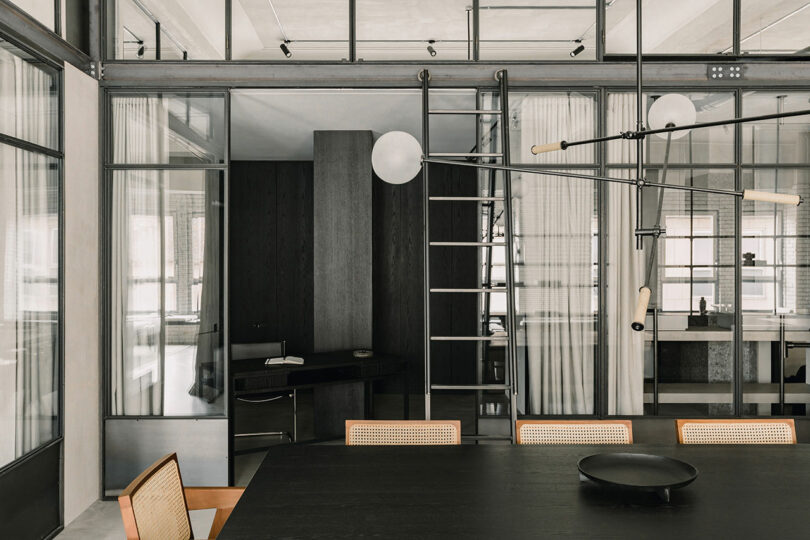
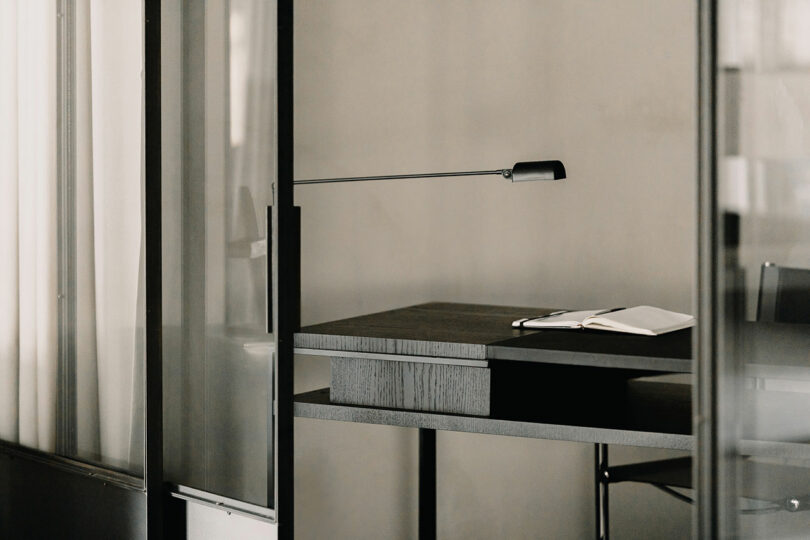
“As we resolved the challenges we had and provided a serene space with a muted color palette that allows the exterior view to become an artwork in the project,” the duo adds. “We presented an extremely cosy and comfortable feeling inside as a result with the idea of ‘comfort via minimalism.’”

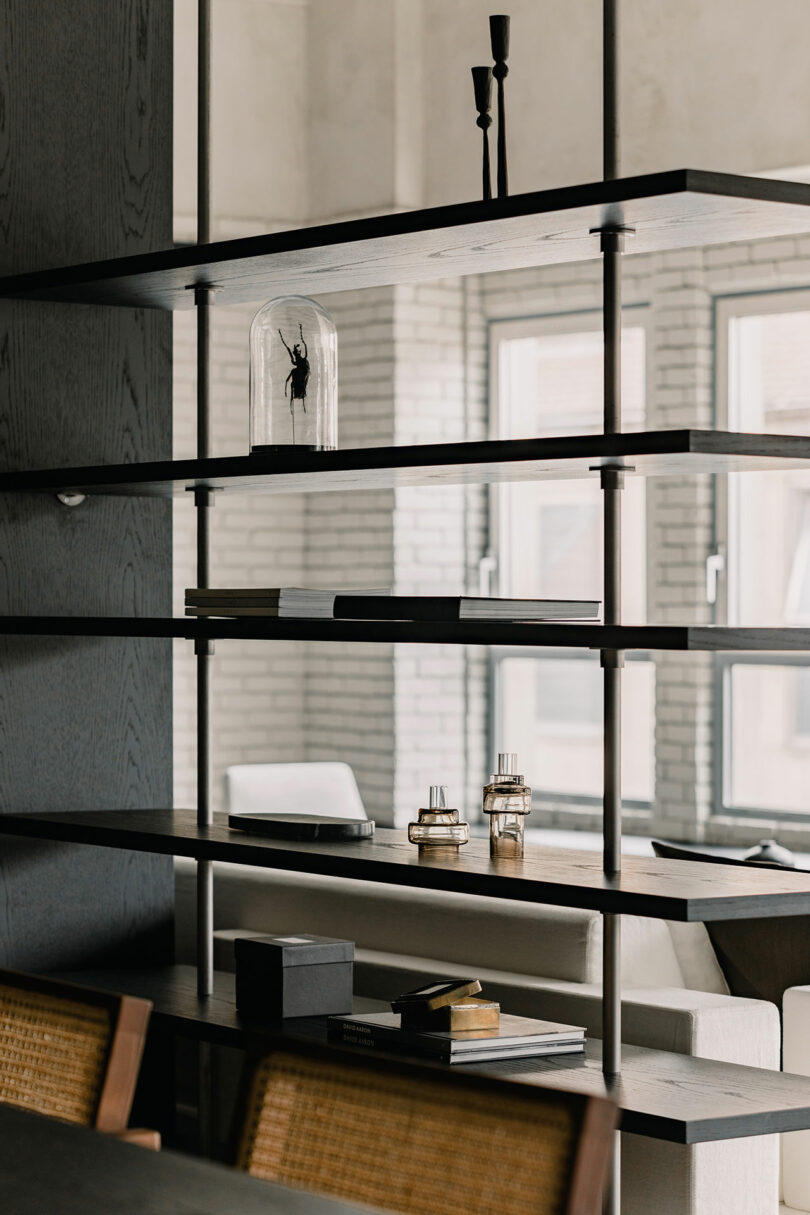
The foyer’s deep paneling pulls guests in and pushes them out to the trio of spaces comprising the main great room – another nod to Wright’s work. Bespoke kitchen details and long countertop surfaces span the room to suggest places for family and friends to cook or casually commune. In gentle contrast, the dining area, which is framed by open shelving and a tubular metal structure, proposes a more formal space for long dinners and gatherings.
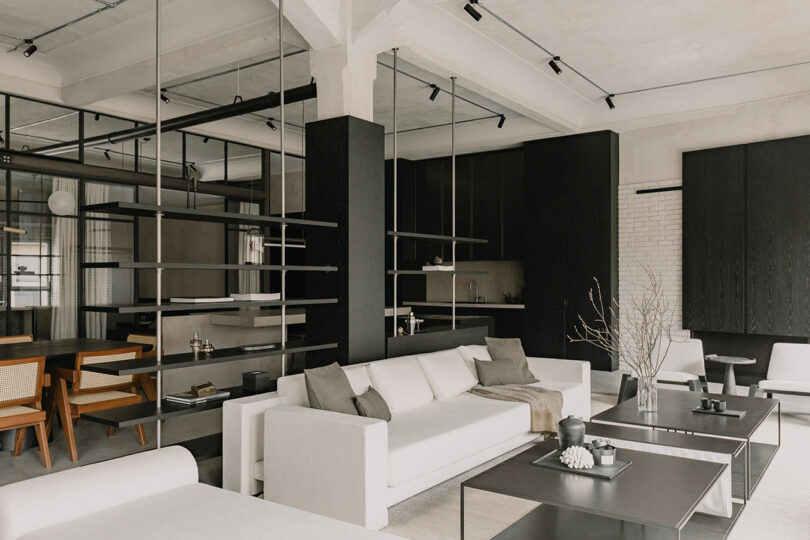
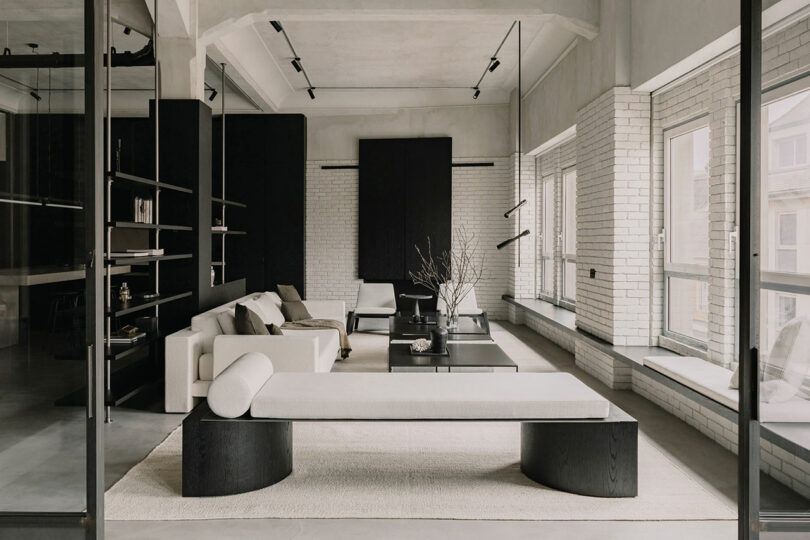
Black mullions and corresponding kick plates fix tall glazed panels and doors to the floor. Each length is lined with floor-length, light, cotton-linen panels that can be drawn closed from inside the bedrooms at each resident’s discretion. And black stained wood is juxtaposed with white gypsum wall finishes as a direct reference to Colmar’s coal industry.
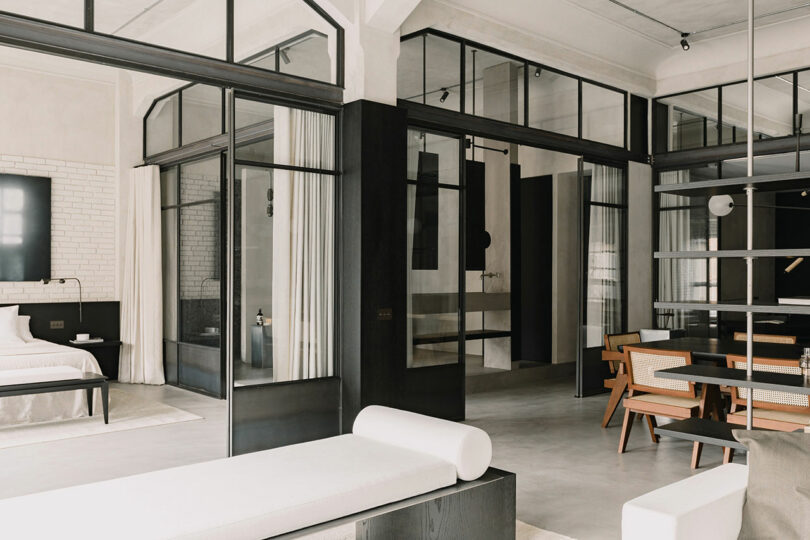
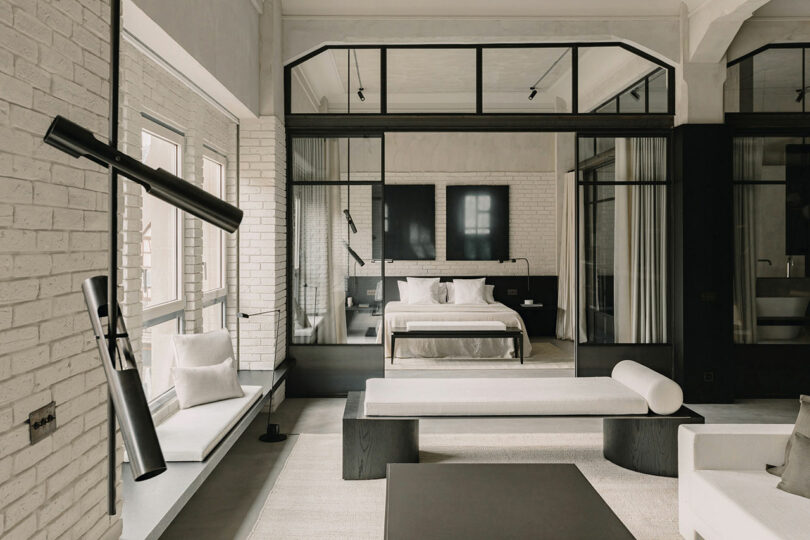
Milo’s monochrome palette, technical execution, and artistic principles are underpinned by exemplary structural art. The designers continue: “Raw ironwork, locally sourced and assembled with meticulous craftsmanship, pays homage to Bartholdi’s artistic vision and the region’s storied iron industry. The use of brick, concrete, and dark timber further reinforces the industrial aesthetic, while subtle nods to the Statue of Liberty and the Eiffel Tower evoke a sense of timeless grandeur.”
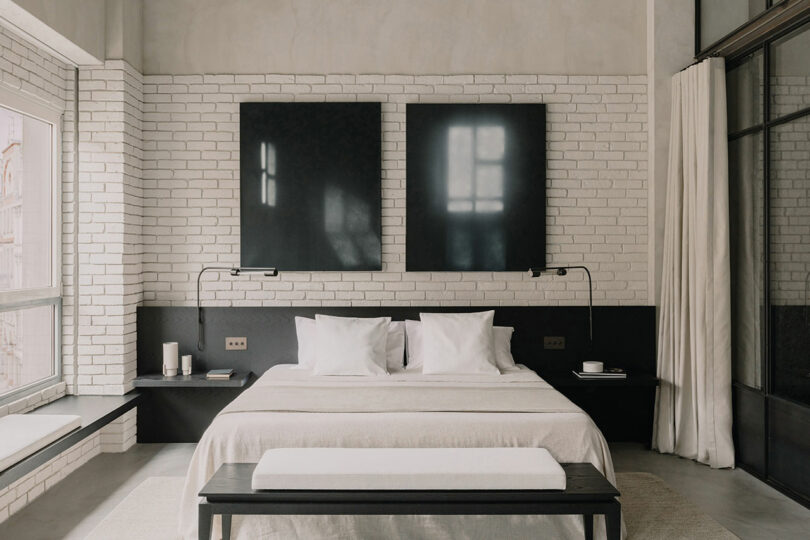
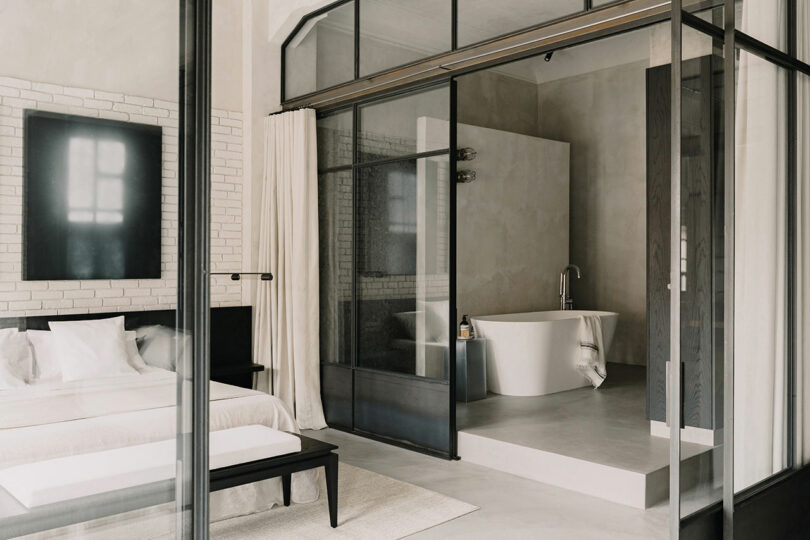
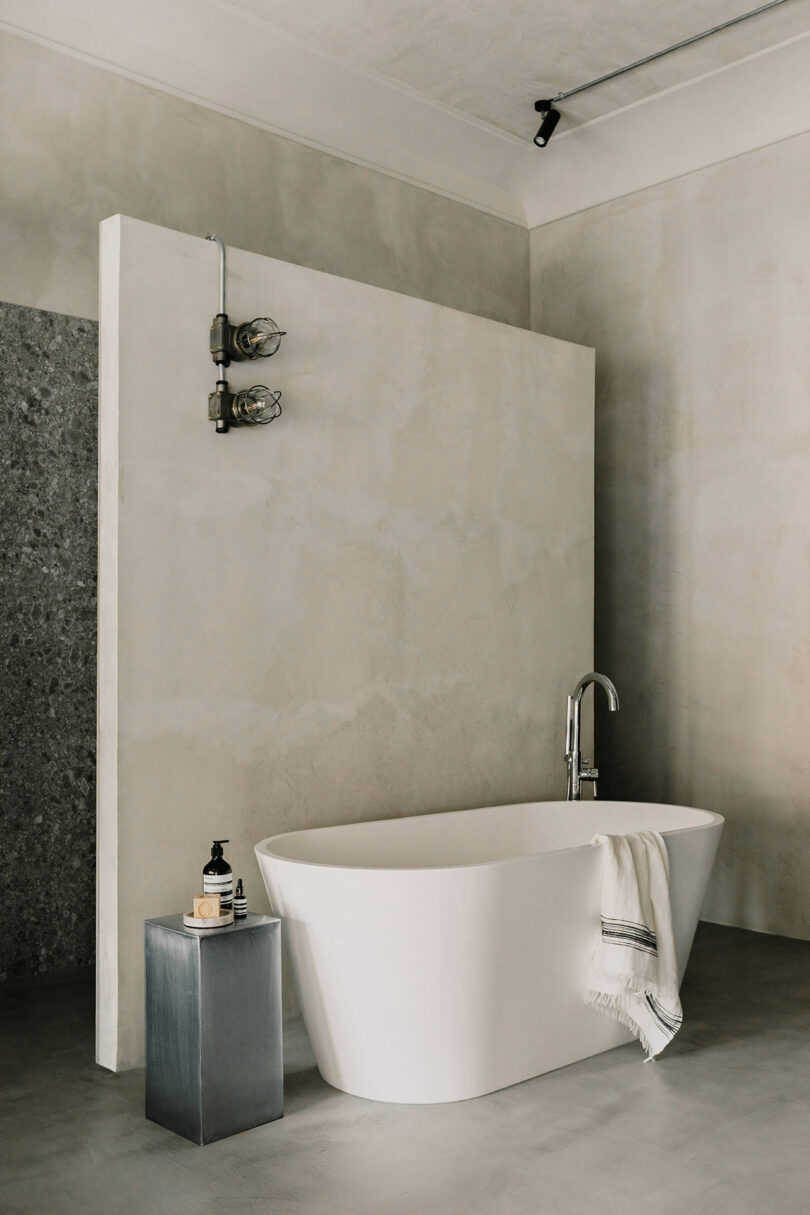
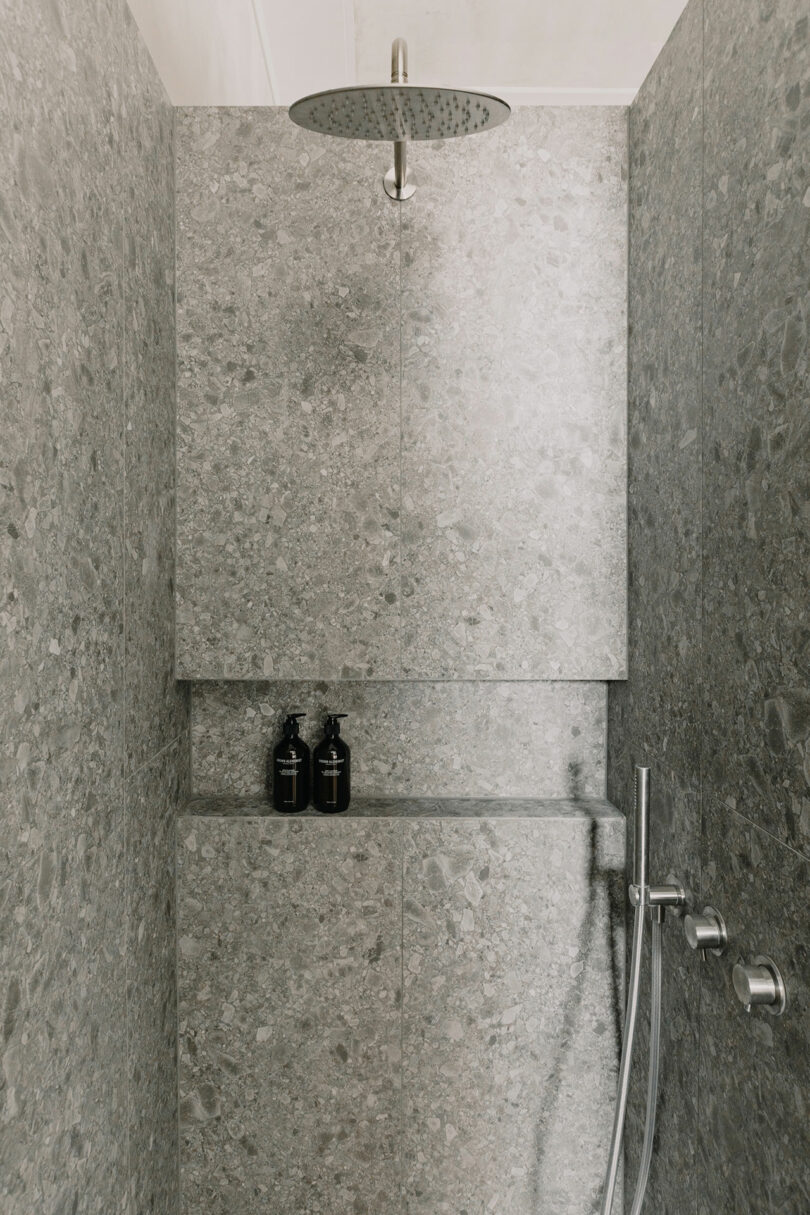
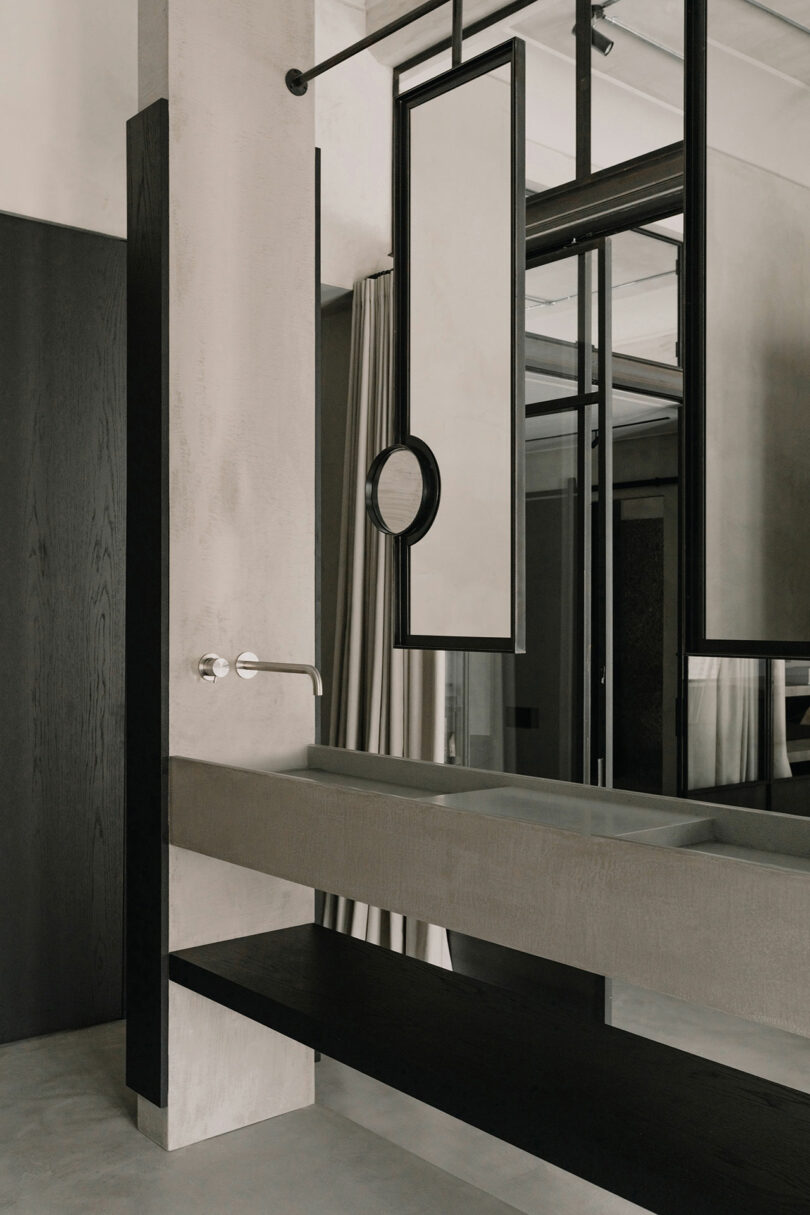

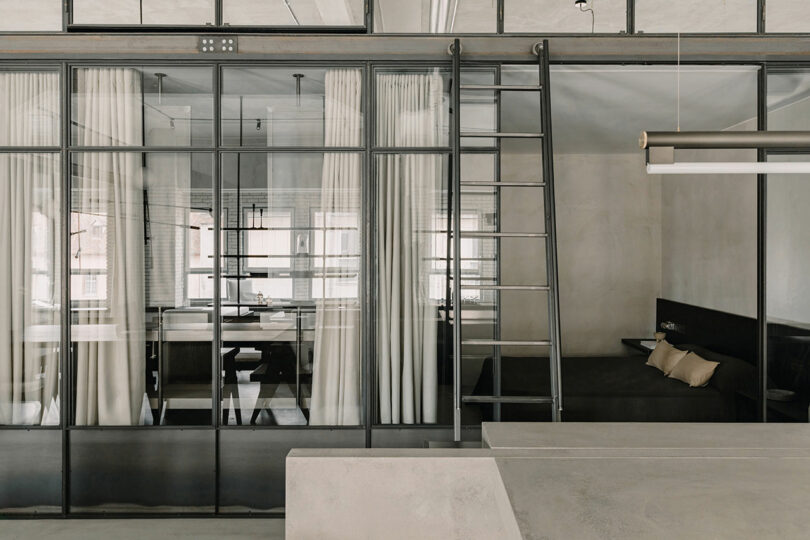

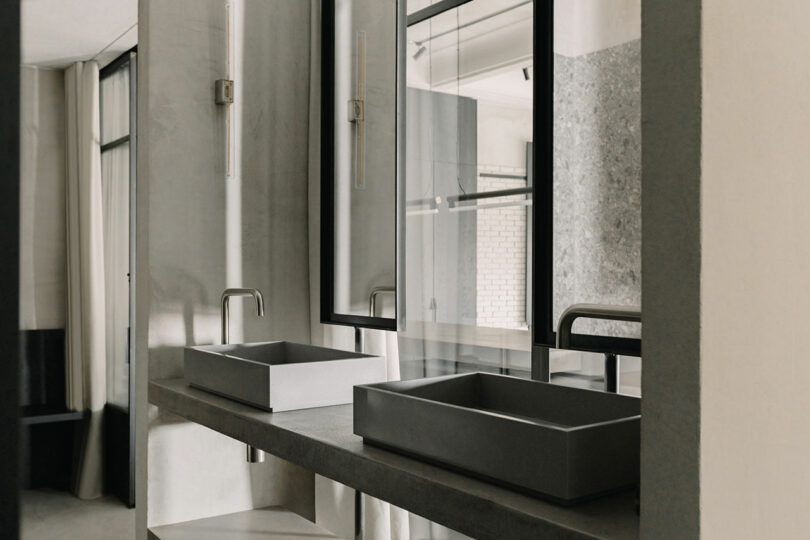
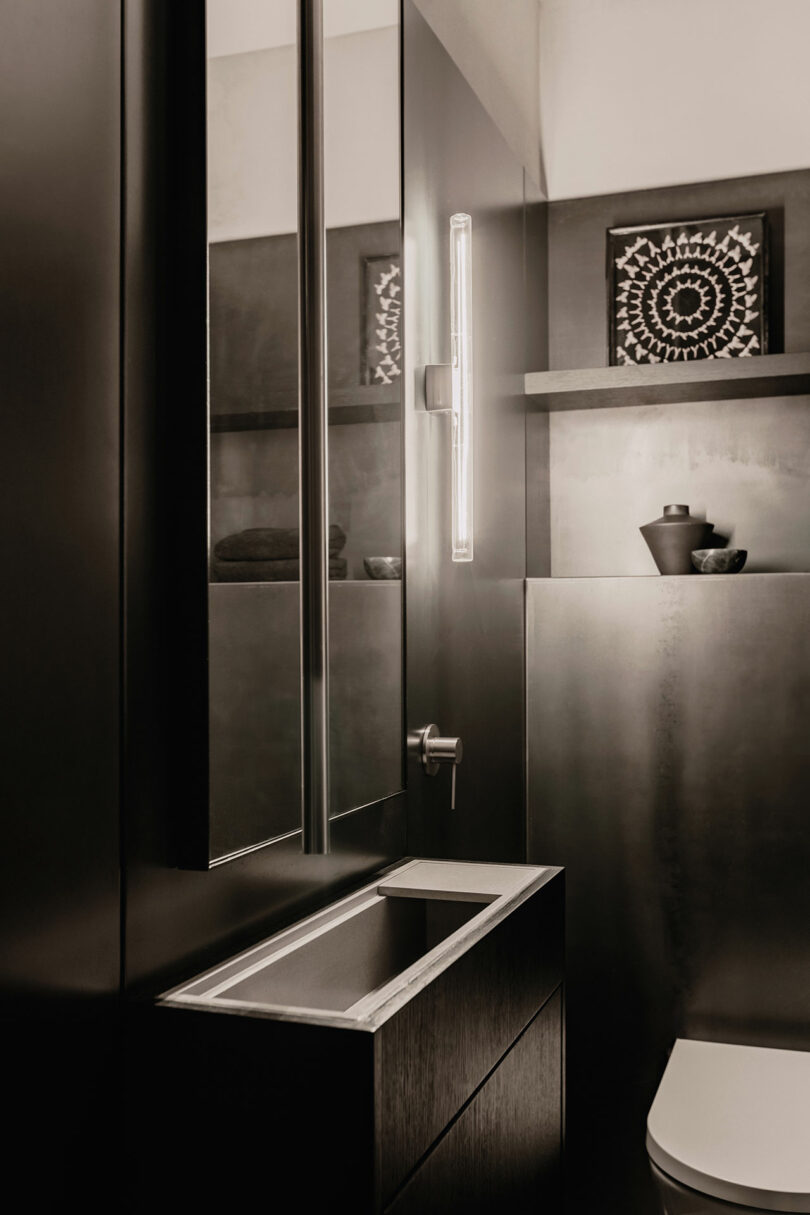

OZA Design
To see other projects by the inimitable duo, visit ozadesign.com.
Photography by Edvinas Bruzas.

